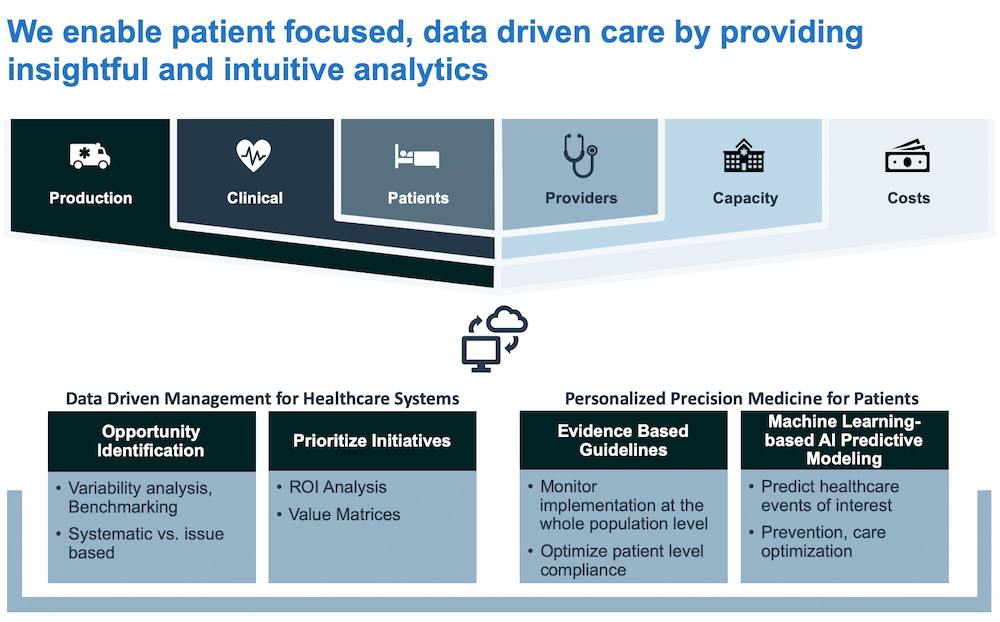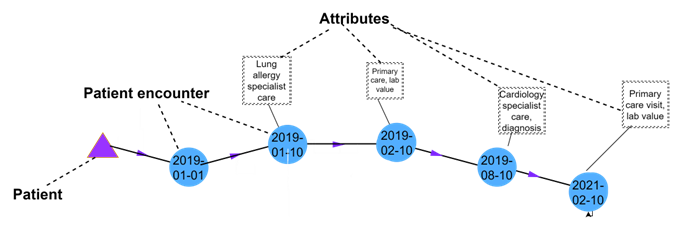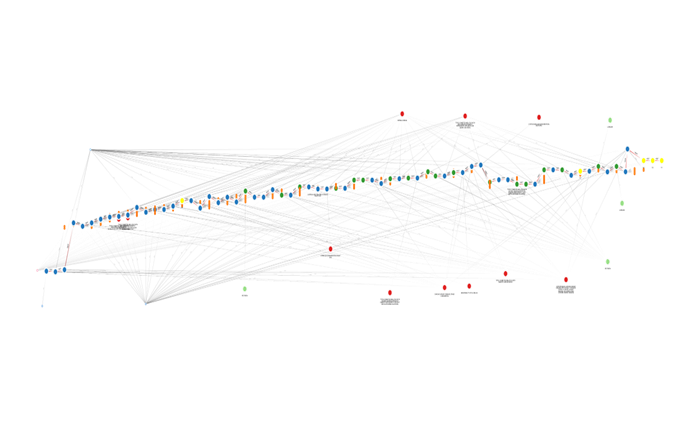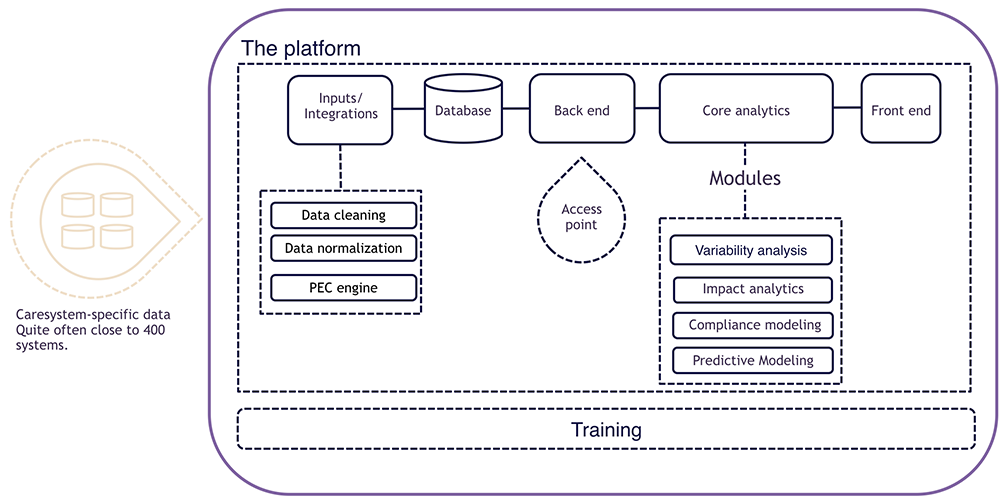The solution to the challenges of the healthcare systems is to link all clinical, financial and resources data in one data layer and then analyze it from the perspective of the patient’s pathway rather than the organizational structure. We call this strategic, end-to-end analysis solution SHAARPEC.


Patient pathways are the time-sequences of patient meetings in different parts of the healthcare system over time. These meetings – patient encounters – are linked to different encounter attributes, such as diagnoses that the patient received, lab values, medications prescribed, cost of the encounter.
SHAARPEC enables data-driven decision-making by arranging all healthcare data into patient pathways. Through patient pathways, SHAARPEC links care now to its impact on care consumption in the future.
Patient pathway analysis enables modelling and calculating the effect of proposed improvement measures in healthcare.
Preventive care aims at altering these patient pathways. Through screening, early detection, medication and similar measures we can alter the patient pathway. By keeping patients healthier, healthcare systems can achieve better health outcomes and save resources.
Detailed: Five time-stamped patient encounters (blue) and encounter attributes (e.g. diagnose, lab value).

All encounters by a certain patient in health care

SHAARPEC creates a foundation for
The analysis is built from the lowest possible level – patient encounters – which enables aggregation in many dimensions: by organizational unit, diagnose code, encounter type, patient cohort, etc.
The SHAARPEC cost allocation model considers all costs, including the cost of unused capacity. The platform is based on the principles of Time Driven Activity Based Costing (TDABC), adjusted to the existing data available at healthcare systems.
Evidence-based guidelines
AI-based machine learning predictive modeling

SHAARPEC is designed to enable sustained value creation for healthcare systems regardless of underlying systems and financial models.
Privacy within SHAARPEC is protected by hosting the platform and data within the healthcare system and pseudo-anonymizing the clinical data.
Shaarpec is uniquely designed to keep the data with the users within the healthcare system, compliant with national and international guidelines and regulations. Data access is restricted to the authorised users.
The platform is designed to operate within Swedish and EU laws and regulations respecting confidentiality and privacy pertaining to patient and corporate data.
Research and benchmarking are made feasible without breaching GDPR and HIPAA by applying several techniques, such as
Grouped together, we call these techniques Base Jumping. Base Jumping makes it possible to run queries across all systems and return the results to one centralized node, while the data itself stays within the local healthcare system.
This allows not only for benchmarking between the systems, but also faster and more accurate training of AM/machine learning algorithms.
Contact us